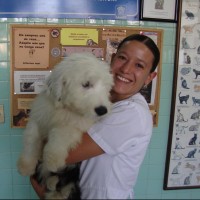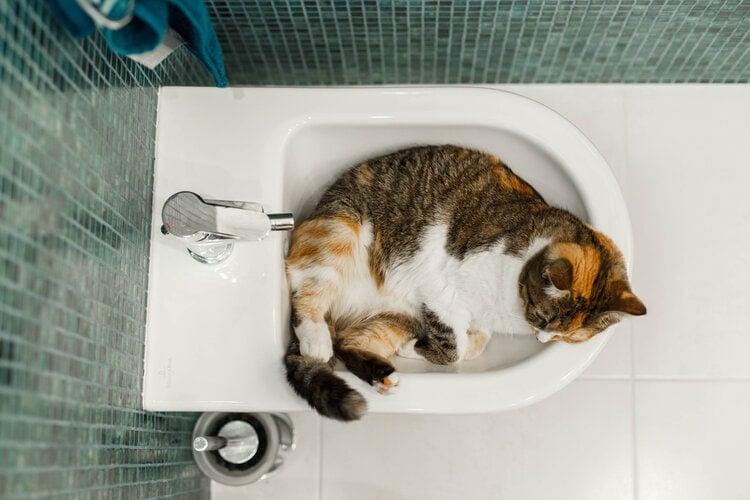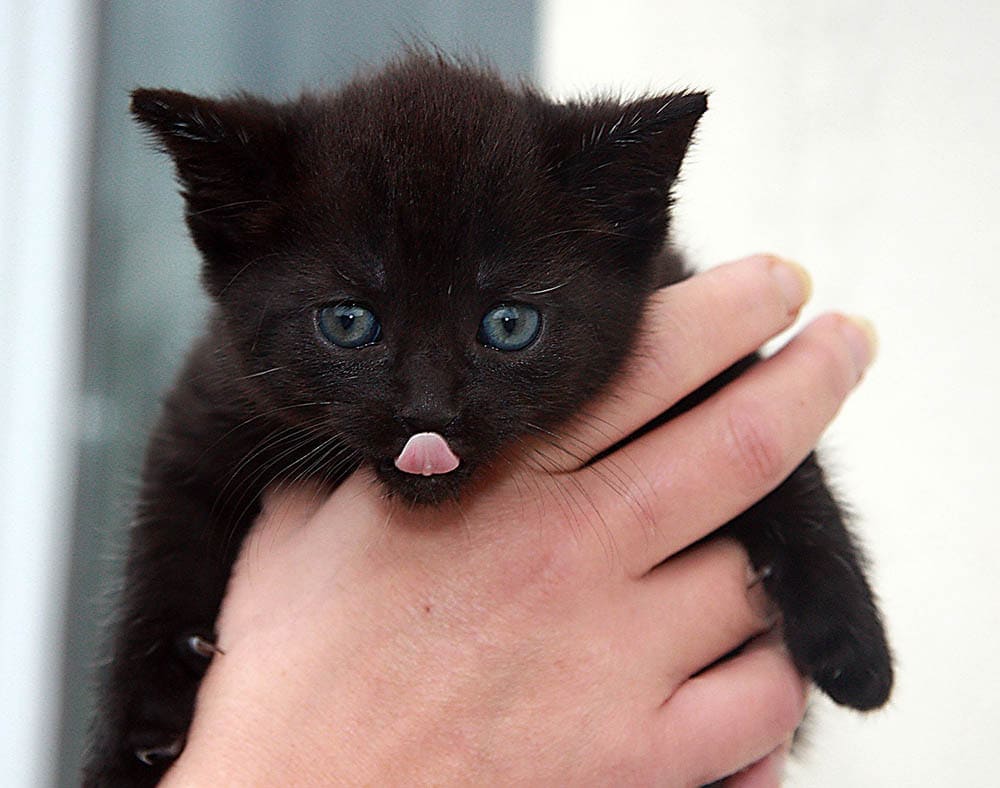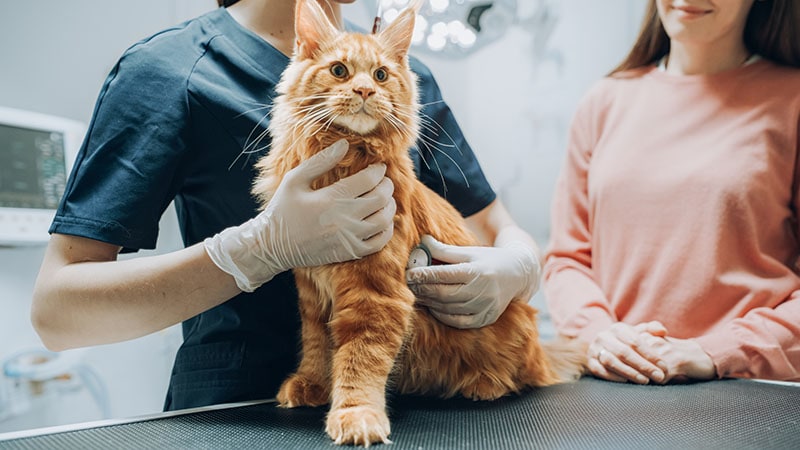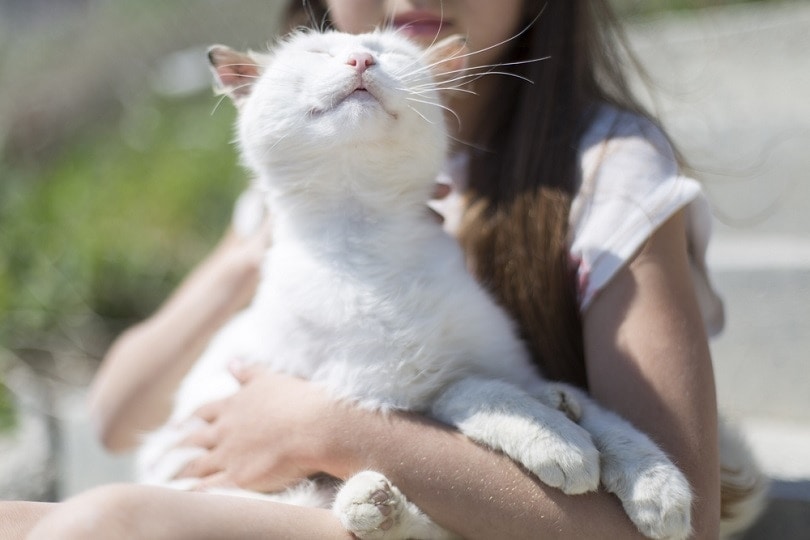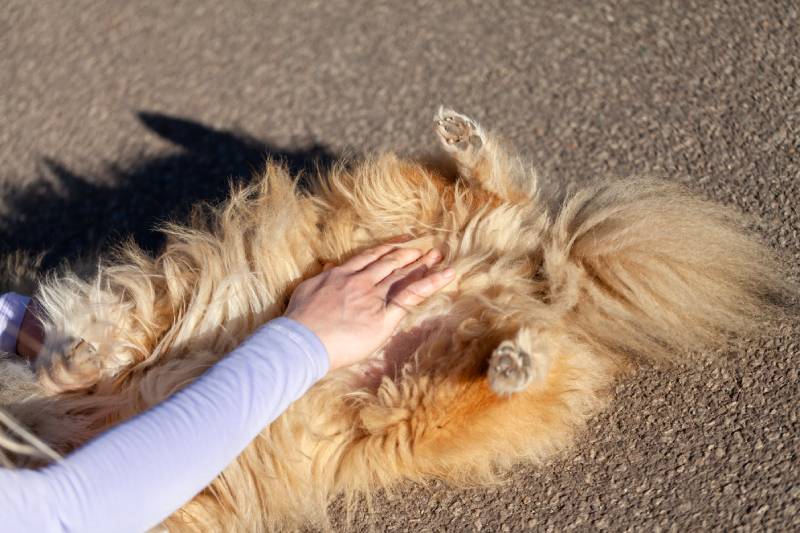How to Bottle Feed Newborn Kittens: 7 Care Tips & Guide
Updated on
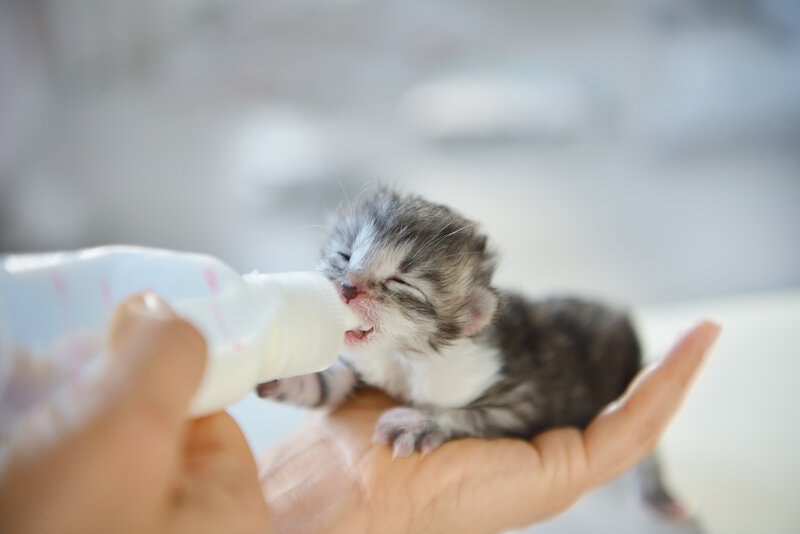
Click to Skip Ahead
Caring for newborn kittens is an equally exciting and rewarding experience. If something happens to the mother cat or they abandon their kittens, you may need to start hand-rearing them. This can certainly be a time-consuming task, as kittens require milk, help going to the bathroom, and plenty of TLC throughout the day and night. However, it will also be a fulfilling experience that you will never forget! A lot of effort and dedication goes into successfully hand-rearing kittens, and since they are so small and fragile, be prepared for the possibility of some of them not making it. Bottle feeding is the most important part of successfully hand-rearing kittens till their weaning stage.
When Should You Hand Raise Kittens?
- The mother cat has abandoned their kittens
- The mother’s milk supply is low
- The mother develops a medical condition or passes away
- The mother cat shows aggression towards her kittens
- The kitten has a medical condition
- The kitten has been rejected from the litter
- The kitten requires special veterinary treatment
- A litter too large to be fed exclusively by the mother
- Note: If you find feral kittens that seem to be abandoned, it is best to wait a few hours to check if the mother comes back to nurse them. The mother cat will venture away from her kittens to find additional food and water for herself, so her kittens will be left alone. Check if they are plump and warm or call the right authorities to help capture and treat the mother and kittens.
How Do You Bottle Feed Kittens With Bottle/Syringe?
There is no skill required to successfully bottle-feed kittens, you will just need to have the determination and time to care for a demanding creature. This means sacrificing sleep and other duties around the house, to ensure that the kitten’s needs are met.
1. Keep Them Warm
The kittens must be warm at all times but especially before feeding; otherwise, they cannot digest their milk properly. If their body temperature drops abnormally low, their metabolism slows down, which can have risky side effects.
2. Choose the Right Teat
A bottle and teat designed for kittens or puppies are the most common option when it comes to bottle-feeding kittens. Keep track of how much milk you are feeding the kitten. This will ensure that each kitten is receiving enough nutrition daily. You can also use a squirrel teat that has been designed for abandoned baby squirrels. It is best to stock up on bottles and teats in bulk, as you will not have much time to wash and dry each bottle in between feedings.
3. Position is Important
Once the formula is ready, the kitten should be placed on their stomach which is a more natural nursing position. Never place your kitten on their back, as they can aspirate and choke on the milk.
4. Start Feeding
Lift the kitten’s chin with one hand and hold the teat near their lips to encourage them to latch onto the teat. The kitten’s tongue should form a V-shape to facilitate suckling. Monitor their head movements so that you can determine if they are swallowing the milk. Bottles are less messy than a syringe or tube feeding, so there should be less discharge from the bottle and mouth when they are feeding, in comparison to tube or syringe feeding.
Heating Requirements
The formula should be heated by placing the container in a sink or bowl filled with hot water. The formula should be warmed before feeding it to the kittens, as kittens will typically refuse cold formula. Keep in mind that the mother’s milk is naturally warm, so your kitten will expect the milk replacement to be the same temperature. Test a few drops of the formula on your wrist to ensure that the temperature is correct. The drops should be warm and comfortable on your wrist, without being too hot or cool.
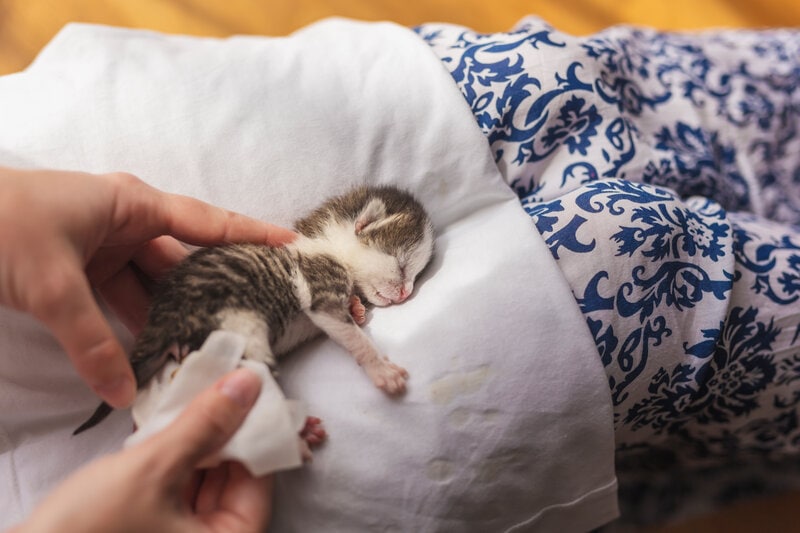
Stimulating Kittens Bowel Movements
If the queen is not present or ill, kittens will need to be stimulated to pass urine and feces before and after each meal. You just need to rub the area around the bottom and the urinary opening with a damp piece of cotton wool/gauze like their mother would do with her tongue. Normal feces will have the consistency of toothpaste. You will need to do this until they are about three weeks old. Ideally, try to do this in the litter tray so that kittens make the association. From about four weeks of age, placing the kitten in the litter tray should encourage them to pass urine and feces on their own.
The 7 Tips for Safely Bottle-Feeding Kittens
1. Put Them in Natural Position
The kitten should lay on its belly with its legs comfortably splayed out. Avoid placing the kitten on its side or back during feeding as this puts your kitten at risk. By laying on their belly, your kitten is automatically placed in a natural nursing position that is safe for them.
2. Keep Them Warm
Keep the kitten warm before feeding so that they can digest the milk replacement at a natural rate. You do not want to overheat them, but rather provide a heating source that replicates their mother’s body heat.

3. Keep Track of Their Weight
Keep a journal or digital copy of the feeding schedule, including how much milk each kitten had per meal and their daily weight. Using your kitchen scales will be helpful. It may also be a good idea to set alarms so that you can determine when the next feeding should be.
4. Preparation is the Key
Prepare the formula in advance so that you do not accidentally rush and miss a step during the process. Your kitten relies on this formula for its health and vitality, so care should be taken when preparing the formula.
5. It Doesn’t End With the Feeding
Care for the kitten after feeding. They will feel tired and sleep, so keep them warm and protected. If you only have one kitten, use a rolled-up blanket or plush toy to provide them with some social companionship. Kittens feel better when they are huddled together, and this also keeps them comfortable.
6. Try to Simulate Natural Conditions
Invert the bottle so that the kitten does not suck in air. Take into account the placement of the mother’s nipples during feeding time, as it is likely that their head is slightly tilted.
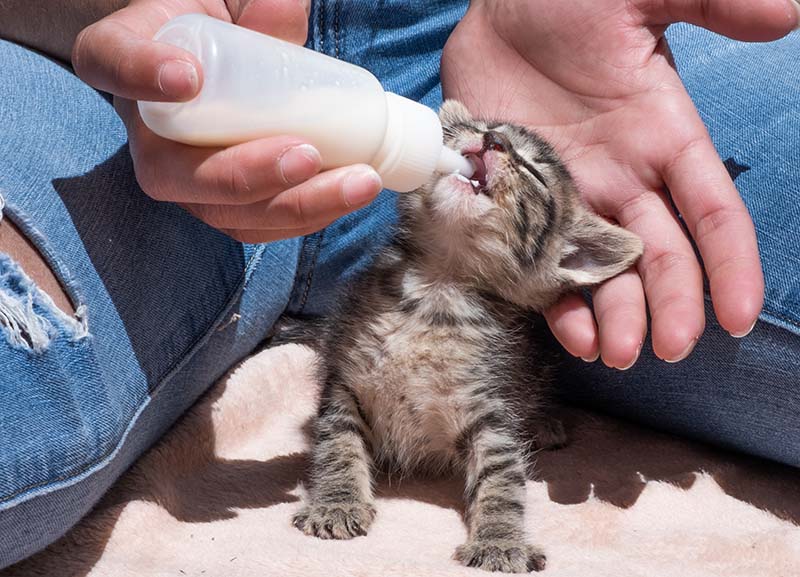
7. Keep Everything Clean
Make sure you have clean hands and sterilized utensils and bottles for preparing and delivering the feed. Hand-reared kittens are very prone to infection, so you will need to take great care to keep everything clean.
Milk Replacement Recipe for Kittens
A homemade kitten milk replacement should only be used for a maximum of 24-hours until you can get a high-quality milk replacement powder from your local veterinarian shop. Petlac Kitten Milk Replacement Powder is a good option for kittens. Not only is it easy for kittens to digest, but it is easy for you to prepare. Mix one tablespoon of the powder with two tablespoons of warm water. This will make approximately 3 tablespoons (1,18 ounces) which can last a small kitten one day. It is best to use boiled water that has been cooled, to keep the formula sterile.
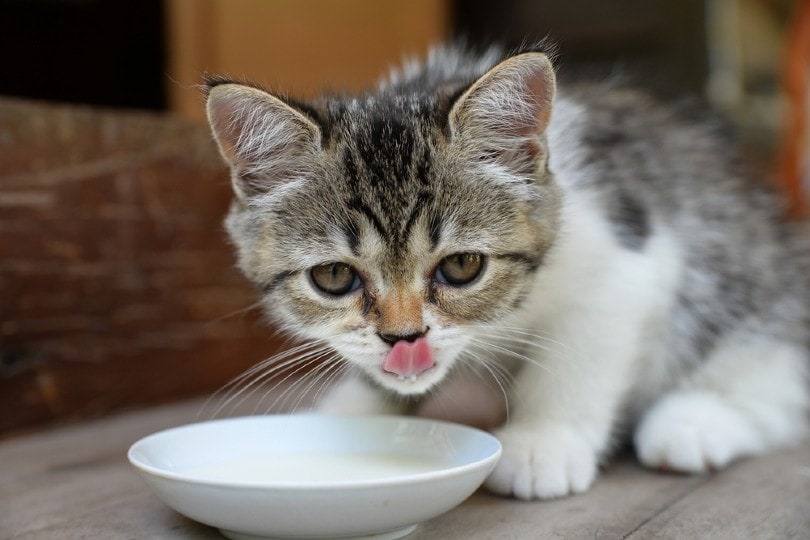
How Much Should You Feed Kittens?
Young kittens should be fed two tablespoons (1 ounce) of milk replacer per day if they weigh between 3 to 4 ounces within 24 hours. Avoid overfeeding the kitten as it can cause them to become bloated, gassy, and uncomfortable. A feeding guideline should be on the back of the milk replacement formulas packaging which will give you a general indication of how much the kitten should eat per its body weight. It is recommended to weigh the kitten every three days so that you can determine how much formula to feed them. This will also give you an indication as to how much they are growing so that you can accommodate their feeding requirements.
For total replacement feeding, follow the instructions (normally given as ‘per 24 hours’) and divide the total amount into the number of feeds that you have scheduled. For example, if you are using Petlac Kitten Milk Replacement Powder, you can start feeding 1 teaspoon per 4 ounces of body weight every 3-4 hours.
For kittens that are still drinking some milk from their mother, reduced volume is needed (give approximately half to one third of the calculated daily amount). Avoid overfeeding the kitten, as this can cause them to become bloated, gassy, and uncomfortable. A feeding guideline should be on the back of the milk replacement formula packaging that will give you a general indication of how much the kitten should eat based on its body weight.
As a general rule kittens should gain around 1.7 to 3.5 ounces per week (0.3-0.5 ounces per day) and should double their weight two weeks after birth.
How Often Must You Feed Kittens?
Kittens that are less than two weeks old should be fed every 2 to 3 hours. This includes during the night. You will have to get up during the night and sacrifice sleep to feed your kitten, however, with the advice from your kitten’s veterinarian, you can feed kittens less at night if they have been at an ideal weight. Kittens between two to four weeks of age should be fed every 3 to 4 hours on average. They will get used to reduced nightly feedings but should still be fed according to a 24-hour schedule. After four weeks of age, kittens should be fed every 4 to 5 hours. They may begin to sleep better during the night without crying for milk every couple of hours. Once the kitten reaches three to four weeks of age, they should be slowly weaned from the milk replacement and introduced to a wet food diet suitable for kittens.
Final Thoughts
Kittens that are less than two weeks old should be fed every 2 to 3 hours. This includes during the night. You will have to get up during the night and sacrifice sleep to feed your kittens, but watching them grow will compensate your sleepless nights. Gradually, according to your veterinarian’s advice and assuming your kittens are growing well, you will start feeding them less at night.
It is recommended to always have a backup plan in the case that you are not with the kitten for a prolonged period. The person helping you will then be able to step in and bottle feed your kitten while ensuring that they are warm and comforted. Always work closely with a veterinarian or professional when hand-rearing kittens, as they know what’s best.
See also:
- For How Long Do Kittens Need Milk From Their Mother?
- How to Tell if a Mother Cat has Abandoned Her Kittens in 6 Steps
Featured Image Credit: KayaMe, Shutterstock
